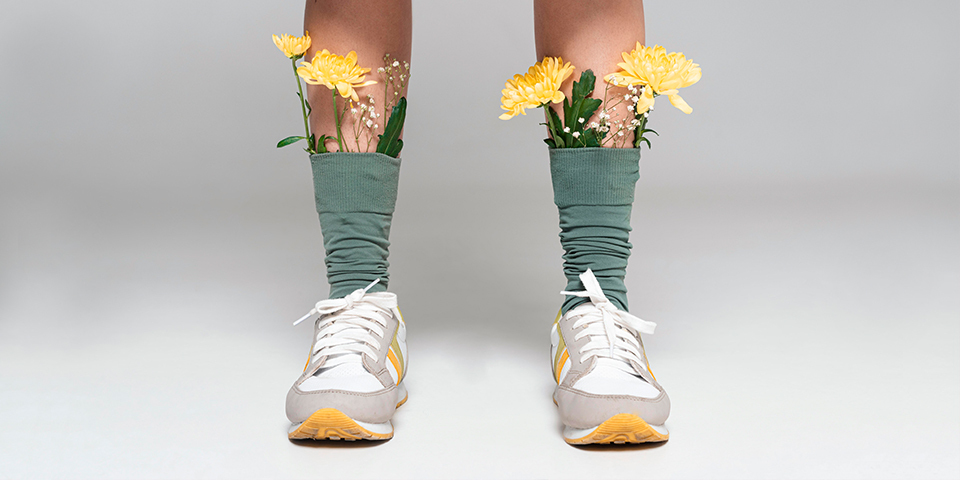One of the most vital points in managing your diabetes is to keep your feet safe. There are a lot of socks and shoes that you can choose if you are a diabetic person. Even if you never face any problems with your feet, you have to take care of them.
What are diabetic socks?
Quality footwear is necessary, and you might want to think about using diabetic socks. You can use diabetic socks to preserve your feet dry, reduce the foot injury risks, and improve blood circulation in your feet. These socks are necessary if you want to take care of your foot, which is a viewpoint of diabetes control.
There is possible harm to the nervous and circulatory systems because of possible high blood sugar levels like Nerve harm (diabetic neuropathy), decreased feeling in your feet, and raises the risk of damage. It can also make a diabetic person ignorant of the possible harm and suspension needed treatment.
You might face circulatory problems that interfere with hurt healing because you need constant blood flow for a successful treatment. High blood sugar levels also can make your immune system weak. If you did not control your diabetes, these difficulties cause a situation that will lead to amputation or even death.
All diabetic people may not need diabetic socks. Usually, comfortable socks that are easy, non-binding, and well-fit well are sufficient for those who do not have any difficulties. By the way, we suggest you wear them through long travel because you sit for long periods, which will grow the risk of swelling or blood clots.
Here, we mention some groups of diabetic people who would profit from always using solely diabetic socks.
You may experience variations in foot color or heat, inflammation, nerve injury, blisters, or fungal diseases.
Recently, you experienced sweaty or moist feet more than ever.
You may have reduced pedal pulse (the measurement used at the top of the foot and back the inner ankle) associated with an enhanced risk of peripheral arterial disease or any other kind of atherosclerosis.
It is appropriate for women with gestational diabetes. They are at a heightened danger of deep vein thrombosis (DVT). These women can decrease the risk of blood clots if they use diabetic socks.
The main Features of diabetic socks
There are different features of diabetic socks. These features directly address foot issues joined to this disease.
Moisture-Wicking Material While wicking socks pull moisture away from the foot, they allow sweat to evaporate. Following that lowers the risk of fungal diseases and also limiting smell. If your feet be drier, more protection from growing blisters and other injuries will happen. While moisture-wicking is an important point for you, Acrylic fibers are more useful than cotton.
- Seamless
Diabetic socks typically are seamless near the toe to decrease the danger of rubbing and injuries that could lead to ulcers. It is an important factor for people with neuropathy or prolonged hyperglycemia (high blood sugar). Usually, diabetic socks have white soles. In this way, they show the draining of a scar that you may not feel it.
- Soft Yarns
The most common material of diabetic socks is fine-textured materials like bamboo and wool, both of them have natural antimicrobial qualities. They also are not likely to be rough on your skin. There are famous brands like Dr. Scholl’s. It offers diabetic socks composed of a specific kind of blister-guard yarn intended to overcome blister-causing friction.
- Non-Elastic Binding
You can use diabetic socks to restrict blood flow. If you use diabetic socks, you can say up with no pressure on the calves.
- Antimicrobial Properties
Sometimes, the material of these socks is copper- or silver-infused yarn. These materials help to prevent the growth of bacteria and fungi and have anti-fungal qualities. Copper-infused socks may also limit reinfection of athlete’s foot on further damages. These socks also reduce the order.
- Padded Soles
Diabetic socks have additional padding that will limit foot injuries. It may be an extra-thick material or gel or silicone pads stitched in. You have to search for diabetic padded socks that suit the kind of action you do: more padding in the heel if you want to stand for lengthy times, for instance. If you walk or exercise often, you need socks with a pad under the ball of your foot. Toe padding may be suitable for somebody who plays sports like tennis or soccer.
- Smart Technology
Some diabetic socks have sensors that control foot warmth. They will inform the wearer through an app if a lesion is growing. You have to use a coin-size battery placed outside of the sock next to the ankle. Usually, you can use these socks for about six months. For more information, you can search on Google.
- Lengths
You can find diabetic socks in different lengths. There are various socks like no-show socks and anklets socks. Also, there are crew-length socks to calf-length and over-the-knee diabetic socks. The last choice is the best one for people who have circulation problems.
Where to Buy diabetic socks
You can find various types of diabetic socks at chain stores, pharmacies. Also, you can buy them online. There are different sites like Amazon. Some of the sites specialize in diabetic socks, like Renfro Socks. You can buy them from $2 a pair to $140. It depends on its matter, quality and size. You can not buy diabetic socks covered by Medicare or other insurance systems. The best one for people who have circulation problems.
Conclusion
You can wear diabetic socks daily (and most diabetic people who require them have to use them every day) and clean them frequently.
They help you increase blood movement to your feet, save your feet dry, limit fungal diseases of your feet, make your feet more comfortable, and prevent diabetic injuries. Most of these socks last about six months with normal wear and usual care.



